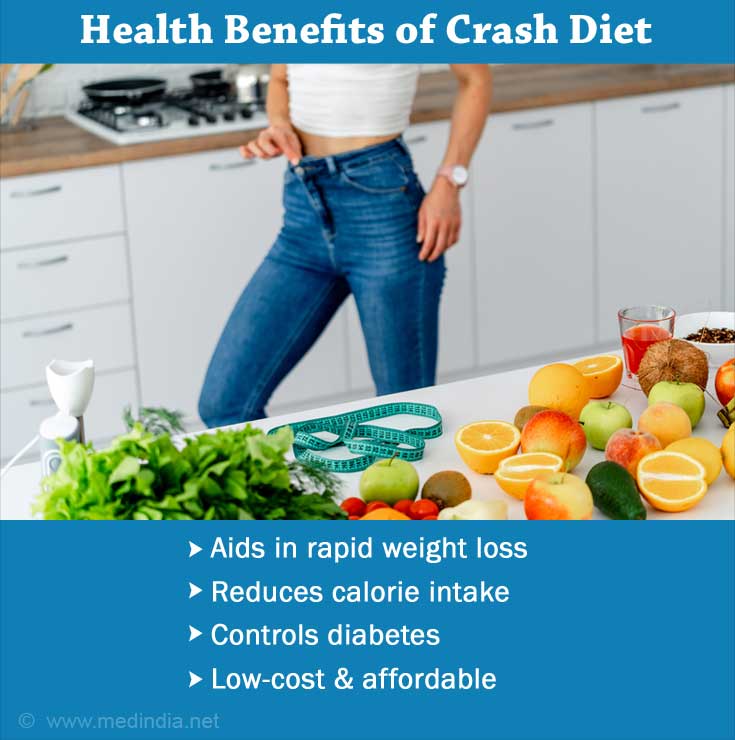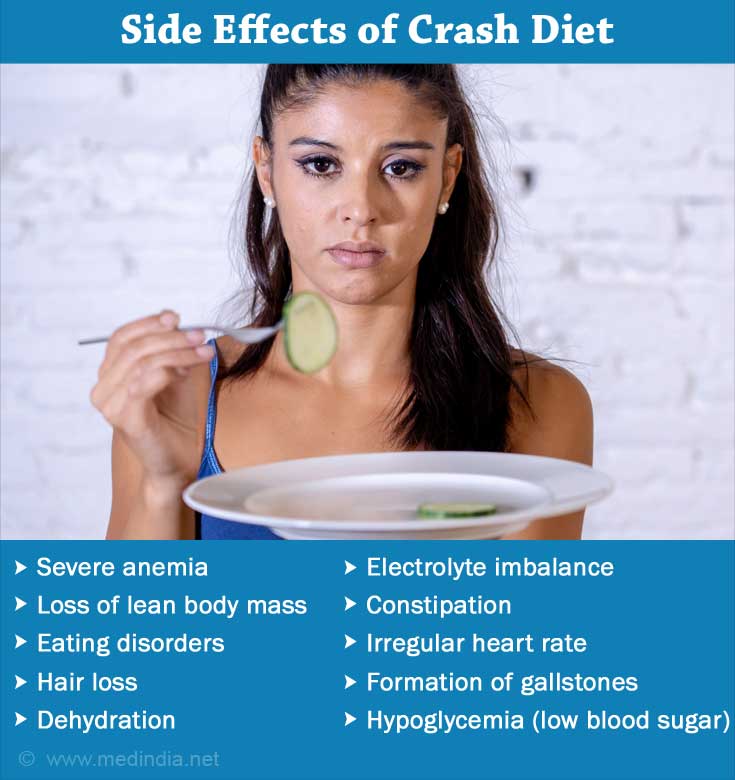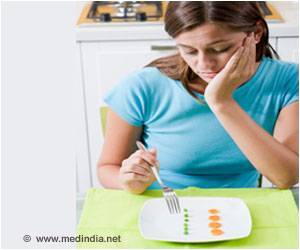- The Risks of the Crash Diet - (https://www.obesityaction.org/resources/the-risks-of-the-crash-diet/)
- Jain, P., &Sanoria, A. (2022). Anemic retinopathy as a presenting feature of severe dimorphic nutritional anemia in a young male patient after crash dieting. Indian Journal of Medical Specialities, 13(1), 62–63. Available from - (https://www.ijms.in/article.asp?issn=0976-2884;year=2022;volume=13;issue=1;spage=62;epage=63;aulast=Jain)
- Oshman, L. (2020). Will a crash lifestyle intervention put new diabetes in reverse?Evidence-Based Practice, 23(2),5 - (https://doi.org/10.1097/EBP.0000000000000465)
- 10 Pros and Cons of a Crash Diet - (https://healthresearchfunding.org/10-pros-and-cons-of-a-crash-diet/)
- Crash Diet Fish Curry Recipe - (https://www.vahrehvah.com/crash-diet-fish-curry-recipe)
- Weight Loss - This cabbage Soup Diet Promises to Help You Lose 10 Poiunds in a Week - (https://food.ndtv.com/weight-loss/weight-loss-this-cabbage-soup-diet-promises-to-help-you-lose-10-pounds-in-a-week-1931172)
What is Crash Diet?
Obesity is a global concern and several weight loss programs have emerged in recent years. Diet is one important factor in managing health and hence tweaking one’s eating habits for weight management can be helpful. Different types of weight loss diets are followed by several across the globe. Among those are the extreme weight loss diets that help lose weight rapidly in a short period. Such crash diets serve both pros and cons.
A crash diet restricts calories to an extremely low level. The diet may be low in carbohydrates or fat and have an imbalanced nutrient composition.
What are the Health Benefits of Crash Diet?

Crash diet has been in the limelight for its influence on body weight. Crash dieting severely restricts food intake, which shows rapid weight loss in a short lapse of time. For individuals wanting to lose weight quickly, crash diets would be their go-to shot.
Crash dieting has shown to be helpful in reducing hemoglobin A1c (HbA1c) levels and may potentially reverse diabetes in newly diagnosed individuals. In a study that administered a diet comprising about 850 calories a day for three months and switched to a normal structured macronutrient diet. About 24% of the intervention group showed weight loss of 15 kg and about 46% had HbA1c levels less than 6.5%. However, to know if this can be sustainable calls for long-term studies.
What are the Side Effects of a Crash Diet?
Following a crash diet plan can spurt several risks to health. Since the time period is short for a crash diet, it is easy to follow compared to other diets. But like the duration of dieting, the results may also be short-lived. The sustainability of the lost weight is a big question and depends on the individual’s lifestyle after the dieting period.

Losing weight rapidly may increase the probability of the formation of gallstones. About 25% of individuals consuming very low calories for weight loss develop gallstones. Such fast weight loss programs may lead to regaining the lost weight, which may trigger the formation of gallstones.
Nutritional deficiencies are the most concerning side effects of following a crash diet meal plan. As the diet includes low-calorie foods, it is challenging to meet nutritional adequacy. A study also reported severe anemia after following a crash diet. Foods are the best source of essential nutrients. Restricting foods to achieve weight loss will deprive oneself of important nutrients and lead to detrimental health effects.
Rapid weight loss may potentially also cause lean body mass loss. Extremely low-calorie diets can lead to about 25% loss in lean body mass. Loss of muscle and bone tissues may lead to frailty and affect metabolism and strength.
Losing a lot of weight in a short span increases the chance of gaining more weight than lost. Crash diet effects on weight are short lived for many and hence may bounce back to their previous body weight or even more.
Eating disorders can also arise due to crash dieting. It should be reconsidered for people who already have eating disorders.
Other side effects reported with crash diet are hair loss, dehydration, electrolyte imbalance, weakness, constipation, irregular heart rate, and
Crash Diet Recipes
A crash diet menu will include recipes that are low in calories and may be low in carbohydrates or low in fat. The following recipes can be included in a day’s menu until the crash diet is followed.
1. Cabbage Mushroom Soup:
Soups can be consumed during any meal of the day. They are low in calories and have enough micronutrients.
Ingredients: Cabbage, mushroom, carrot, tomato, celery, onion, garlic, olive oil, vegetable or chicken stock, salt, and pepper.
Method: Add olive oil to a heated saucepan. Toss in chopped garlic and sauté well. Next add in chopped onions, sauté until they turn translucent. Later add the chopped tomato, carrot, mushroom, and celery and sauté well. Pour in the stock, close the lid and allow it to boil. Lastly, add salt and pepper, mix well, and serve hot.
2. Crash Diet Fish Curry:
Fish is a good source of protein and are also low in fat.
Ingredients: Fish (variety of choice), onion, spinach, ginger garlic paste, chilly powder, turmeric powder, cumin powder, olive oil, and salt.
Method: Mix ginger garlic paste with water to change consistency to liquid-like. Heat the stewpot over medium flame. Add olive oil, chopped onion and sauté well for two to three minutes. Next add chilly powder, turmeric powder, cumin powder, and salt. Mix well and let it cook for five minutes. Adjust consistency by adding water. Boil the spinach separately and chop it finely. Add in the boiled spinach next and mix well until it looks like spinach soup. Cut the fish to the desired size and add to the curry. Simmer the fish until cooked by closing with a lid. Serve hot.
Bottom Line
Weight loss for overweight or obese individuals will deliver them several health benefits. Expecting magic tricks in a short span of time may seem possible with crash diets but may not be sustainable. Though one only focuses on weight loss, the side effects that are served along cannot be overlooked. Hence, consuming a balanced diet with nutrient-rich foods and leading an active lifestyle will be the best road to losing weight and gaining health.









